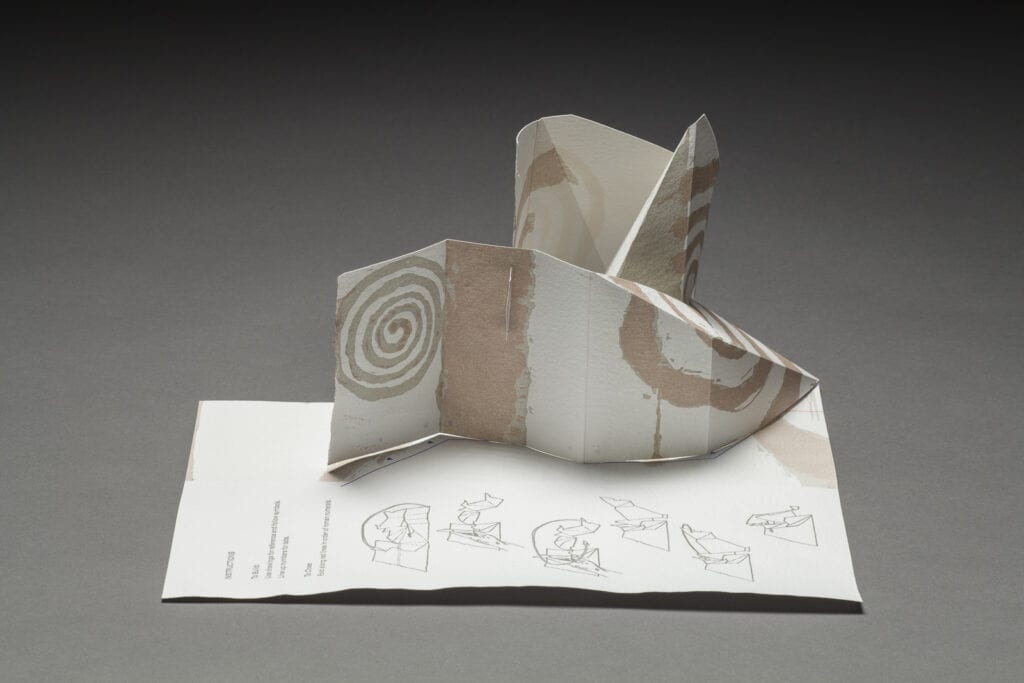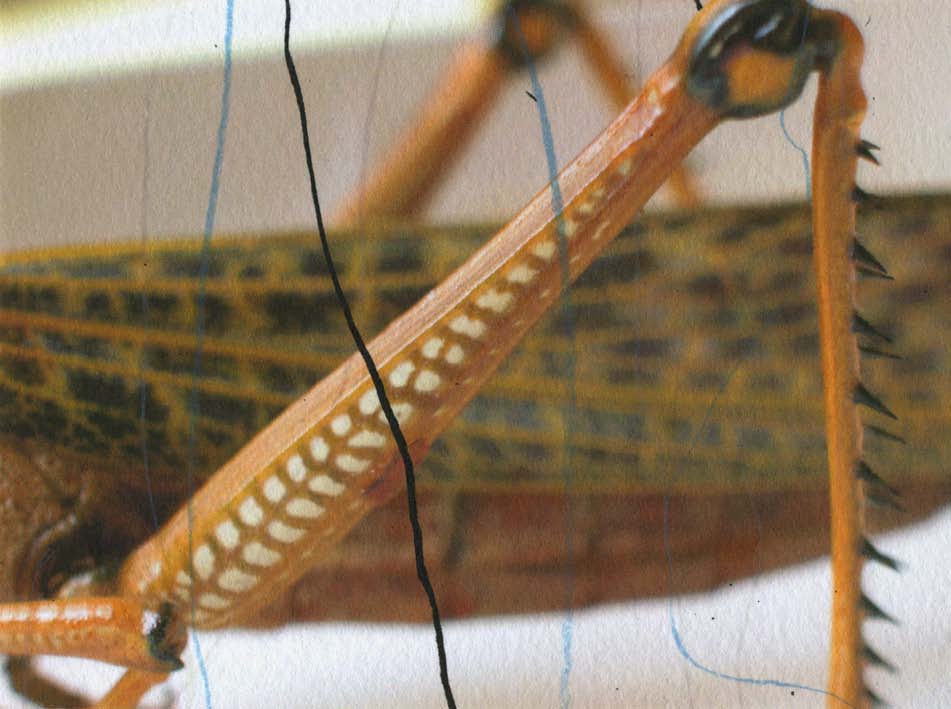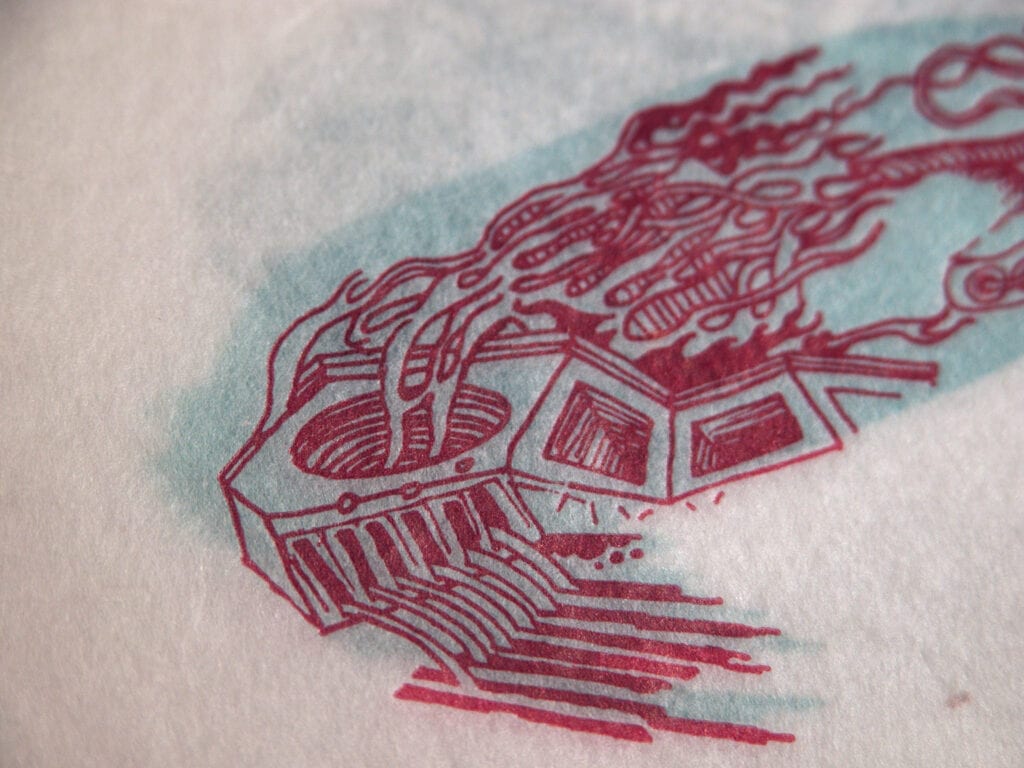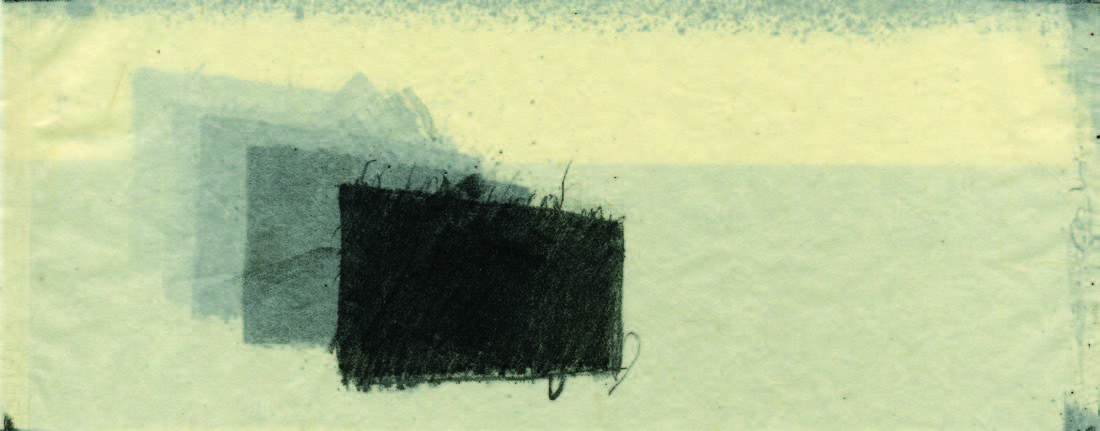“It’s about just seeing it move and seeing the timing of it,” said artist Thorsten Dennerline, who recently has been making videos of his three-dimensional books.
Prior to the COVID pandemic, Dennerline brought his books to fairs and visited people to show them how the books work in person. Now he’s looking for ways for people to experience the pieces.
“You’ve got to see this thing in real life because it’s an object and so I’m trying to get people to see it ‘in person,’” said Dennerline, a faculty member at Bennington College who founded Bird Press in 1996, which focuses on hand-printed artists’ books.
Text and image are a big part of his work as subject matter and as a relationship on the page, while also referencing the history of books and their physical structures.

Collaboration with writer, Jorge Accame —
Translation by Jonathan Pitcher
“Mad Magazine,” old wood cuts, comic books, tattoo art, and punk rock flyers inspire Dennerline, as well as poetic subjects and what he calls weird, unexpected or grotesque elements.
“I’m definitely interested in historical processes but I don’t use that word when I describe my work. I do use antiquated technology,” said Dennerline, who works in letterpress, lithography, woodcuts, etching as well as digital printing.
“I’m interested in these processes not so much as in an antiquarian or nostalgic sense, but more as a way to pursue a certain presence with the work,” he said. “Some people talk about craft but for me it’s more of a pursuit of a sublime presence, which is like a seduction, I think.”
Collaboration with writers and artists has become a key part of his work and a source of inspiration.

Collaboration with writer, Jorge Accame —
Translation by Jonathan Pitcher
In “Emergent Forms,” Dennerline collaborated with Susan Sgorbati, a choreographer whose work includes “emergent improvisation.” The book includes an exterior cover that slides away to reveal a carefully constructed geometric base shaped to hold four different pieces: “Pattern,” “Memory,” “Landscape,” and “Dream.”
“Pattern” is a hand stitched letterpress flipbook in which yellow, pale pink and lavender shapes grow and shrink, seeming to interact with one another while they move on and off the pages at the desired pace of the viewer. “Memory,” is a letterpress piece embellished with woodcut prints of pale pink spirals. The piece comes with IKEA-like instructions of how to assembly the irregularly-shaped sheet into a paper sculpture. “Landscape,” is made up of overlapping dark shapes drawn with stone lithography on five connected translucent pages that can be unfurled.

“Dream” depicts serpent-like shapes on translucent pages that seem transformed as the images overlay one another with each page turn.
“Dancers collaborate, they are always doing work in groups. Susan had a complex understanding of collaboration and improvisation in dance. Those pieces looked well planned and controlled but I had no idea what it was going to be,” said Dennerline who received a BFA from the University of Massachusetts and an MFA from Syracuse University.
Unexpected things emerge out of collaboration, he said.
“There is an element of trying the unexpected or unexplainable or some sort of spontaneous opportunity or improvisation in the work,” he said. “Collaborators can help you do that because you have to give up control. It’s a way of putting in another element that you don’t know what it’s going to be.”

Collaboration with writer, Brendan Isaac Jones
Dennerline, who is half-Danish and half-American, traveled to Denmark to collaborate with six Danish poets who were selected by Danish poet Susanne Jorn.
“Every section is very different because I was trying to allow collaboration with each person to be different and influenced by the dialogue and interaction. So that’s why they all look so different — and that’s part of the point. It’s not ‘Thorsten’s style’ and then the poetry on the side. It’s more like a document of the dialogue with each person,” said Dennerline, who worked with the poet to produce a four-page section of the piece.
When he visited poet Signe Gjessing at her home,, she had a large drawing on the wall of her home and said she liked the “Emergent Forms” dance project.
“We talked about making a dance project together, so that was for me a prompt to make drawings. So I started her drawings that were very improvisational,” Dennerline said. “And the other thing she’s known for is these very very long lines of text in her work and because of the large format of this book, we were able to do the longest line of text that she’s ever had.”

Poet Lea Marie Løppenthin sent Dennerline five photographs to work from.
“I started drawing on top of the photographs and arranging them and sent them to her and she responded by writing the poems in the book,” he said. “I laid out poems within the photographs and drawings, so that was the back and forth with her.”
Other poets in the project included Anders Abildgaard, Casper Eric, Cecilie Lind, and Rasmos Nikolajsen.
Dennerline said he’s always been fighting against the standard — and easier — way of making books, which is to know what you’re going to create before you start.
“That’s what publishers do — this is the budget and we’re going to work with this person and they’re going to do this and this,” he said. “And since I’m doing this from an artist point of view, I don’t have to have these things planned out and it’s actually a better way to do it.”
Dennerline said as he’s gotten older, he’s realized he became an artist, printmaker and bookmaker because it tapped into his deeper sensibilities.
“One of the things I didn’t realize I wanted to do was I wanted to tell stories,” he said. “I got into printing because of its natural tendency to go into series or groups of things.”

He said he hoped the work would bring the viewers into a psychological zone or mode where they connected with the maker’s process of bringing the object into its present state.
“It’s like picking up a Japanese lacquer bowl or looking at polished marble in Italy and you realize someone spent a lot of physical and emotional energy getting this thing to this point and it’s almost seducing you in a way, and I’ve always been fascinated by that,” he said.
He said he has noticed that more of his students are engaging with craft as an underrepresented art form.
“You get empowered when you make a thing,” he said. “Making a book has a lot of presence for us in our minds and through history. It’s a powerful object.’

